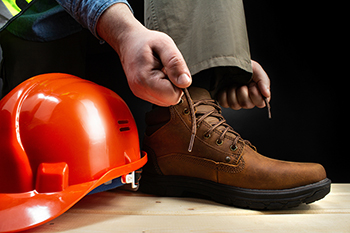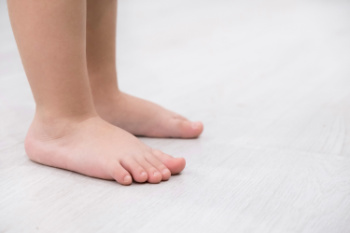Items filtered by date: August 2025
Protecting Your Feet on the Construction Site

Working in construction exposes your feet to heavy equipment, sharp debris, and uneven surfaces, making foot protection essential. Wearing high-quality steel-toe boots, slip-resistant soles, and cushioned insoles helps prevent injuries, blisters, and long-term strain. Proper hygiene and moisture control are also key to avoiding infections and skin conditions. A podiatrist can evaluate foot pain, provide custom orthotics, and treat injuries to ensure you stay safe and mobile on the job. Ignoring foot discomfort can lead to chronic issues that affect work performance and quality of life. If you have endured a foot injury, it is suggested that you schedule a visit with a podiatrist who can treat various foot conditions, keeping your feet healthy and strong throughout your construction career.
While working on the feet, it is important to take the proper care of them. For more information about working on your feet, contact Edward Sharrer, DPM from Premier Foot and Ankle Clinic. Our podiatrist will treat your foot and ankle needs.
Working on Your Feet
Standing on your feet for long periods of time can cause stress and pain in your feet. Your whole body may experience change in terms of posture, back pain, bunions, callouses and or plantar warts. There are ways to avoid these conditions with proper foot care, smart choices and correct posture.
Positive Changes
Negative heeled shoe – Choosing this shoe type places the heel slightly lower than the ball of the foot. These are great for overall foot health. Find shoes that fit you correctly.
Go barefoot – Our feet were not designed to be enclosed for all hours of the day. Try to periodically expose your feet to air.
Eliminate Pain
Foot Exercises – Performing simple exercises, incorporating yoga and doing stretches are beneficial. This will allow increased blood flow to the area and muscles of the foot.
Achilles tendon – Stretching the foot out flat on the floor will relax the calf muscles and tendon. These exercises can be performed almost anywhere. Make sure you add these exercises to your daily regimen.
With a little bit of this information and knowing more about foot health, you will notice changes. Foot stretches and proper footwear will help with pain and prevent further issues.
If you have any questions please feel free to contact our office located in North Little Rock, AZ . We offer the newest diagnostic and treatment technologies for all your foot and ankle needs.
Causes and Symptoms of Flat Feet in Babies

Flat feet in babies and children are common and usually a normal part of early development. Symptoms include feet that appear flat when standing, uneven shoe wear, or difficulty with balance as the child begins to walk. This condition often results from undeveloped arches, flexible joints, or inherited traits. While many cases resolve naturally as the child grows, some may benefit from early evaluation. A podiatrist can assess foot structure, provide stretching exercises, and recommend proper footwear or orthotics, if needed. If you notice your baby or child is walking differently or showing signs of discomfort, it is suggested that you consult a podiatrist. Early guidance can support healthy development and prevent future foot or gait concerns.
Flatfoot is a condition many people suffer from. If you have flat feet, contact Edward Sharrer, DPM from Premier Foot and Ankle Clinic. Our podiatrist will treat your foot and ankle needs.
What Are Flat Feet?
Flatfoot is a condition in which the arch of the foot is depressed and the sole of the foot is almost completely in contact with the ground. About 20-30% of the population generally has flat feet because their arches never formed during growth.
Conditions & Problems:
Having flat feet makes it difficult to run or walk because of the stress placed on the ankles.
Alignment – The general alignment of your legs can be disrupted, because the ankles move inward which can cause major discomfort.
Knees – If you have complications with your knees, flat feet can be a contributor to arthritis in that area.
Symptoms
- Pain around the heel or arch area
- Trouble standing on the tip toe
- Swelling around the inside of the ankle
- Flat look to one or both feet
- Having your shoes feel uneven when worn
Treatment
If you are experiencing pain and stress on the foot you may weaken the posterior tibial tendon, which runs around the inside of the ankle.
If you have any questions please feel free to contact our office located in North Little Rock, AZ . We offer the newest diagnostic and treatment technologies for all your foot and ankle needs.
